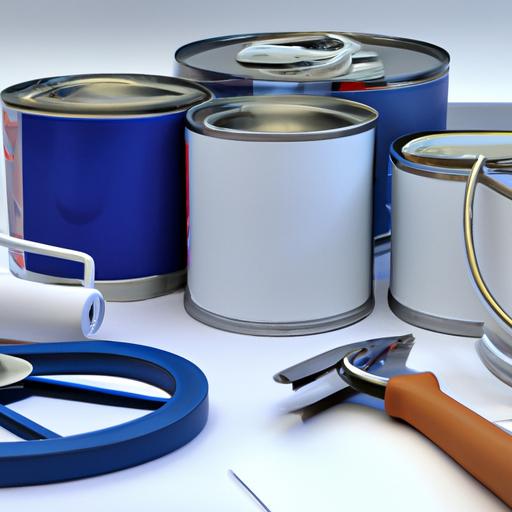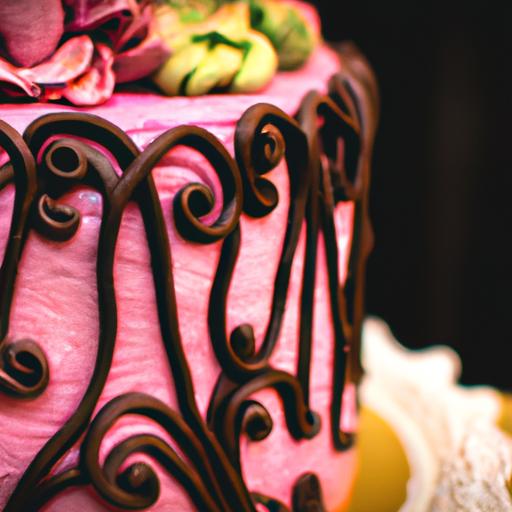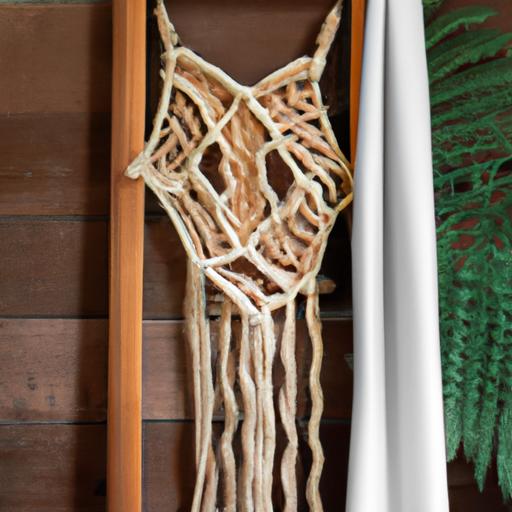Materials Needed in Decorating Metal Products

Metal products have a unique allure that can be further enhanced through creative decoration. But have you ever wondered what materials are needed to achieve stunning results? In this article, we will delve into the world of metal decoration and explore the key materials required to transform ordinary metal into extraordinary works of art.
When it comes to decorating metal products, the choice of materials plays a crucial role in achieving the desired outcome. From cleaning and prepping the metal surface to applying primers and paints, each step requires careful consideration and the right materials. Without the proper tools in hand, your creative vision may fall short of its full potential.
Throughout this article, we will explore various aspects of metal decoration and highlight the essential materials needed to bring your ideas to life. Whether you are a seasoned artist or a DIY enthusiast, understanding these materials will empower you to create stunning metal decorations that truly stand out.
Join me as we embark on a journey through the fascinating world of metal decoration materials. From the initial surface preparation to the final finishing touches, we will cover everything you need to know to achieve professional-looking results. So, let’s roll up our sleeves and dive into the realm of materials needed in decorating metal products!
Understanding Metal Surfaces
Characteristics of Different Types of Metal Surfaces
Before diving into the world of metal decoration, it’s crucial to understand the characteristics of different types of metal surfaces. Each metal, such as stainless steel, aluminum, or copper, possesses unique properties that can affect the decoration process. For example, stainless steel is known for its durability and resistance to corrosion, while aluminum is lightweight and malleable. By familiarizing yourself with these characteristics, you can choose the most suitable materials for your specific metal surface.
Importance of Surface Preparation Before Decorating
Proper surface preparation is the foundation of successful metal decoration. Before you can apply any decorative materials, it’s essential to ensure that the metal surface is clean, smooth, and free from any contaminants. This step not only improves the adhesion of decorative materials but also helps achieve a flawless final result. Neglecting surface preparation can lead to poor adhesion, peeling, or uneven finishes.
Recommended Materials for Cleaning and Prepping Metal Surfaces
To prepare metal surfaces for decoration, a range of materials can be utilized. Here are some recommended materials commonly used in cleaning and prepping metal surfaces:
-
Degreasers: These are used to remove oils, grease, and other contaminants from metal surfaces. Choose a degreaser suitable for your specific metal type to ensure effective cleaning.
-
Sandpaper or Abrasives: Depending on the condition of the metal surface, sandpaper or abrasives can be used to smooth out imperfections, remove rust, or create a suitable texture for the desired decorative effect.
-
Solvents: Solvents like acetone or mineral spirits can be employed to remove stubborn stains, residues, or old paint from metal surfaces. Ensure proper ventilation and follow safety guidelines when using solvents.
-
Rust Converters: If your metal surface has rust, using a rust converter can help neutralize and convert rust into a stable compound, preventing further corrosion.
By utilizing these recommended materials, you can effectively clean and prep your metal surfaces, providing a solid foundation for the subsequent decorative steps. Remember, the key to a successful metal decoration lies in understanding the characteristics of your metal surface and employing the appropriate materials for surface preparation.
Primers and Paints for Metal
Different Types of Primers Suitable for Metal Surfaces
When it comes to metal decoration, choosing the right primer is crucial for ensuring a smooth and long-lasting finish. There are different types of primers available, each designed to adhere effectively to metal surfaces and provide a solid foundation for further decoration.
One popular option is the rust-inhibiting primer, specifically formulated to prevent corrosion on metal. This type of primer contains anti-rust agents that create a protective barrier, ensuring the durability of your metal decoration. Another option is a self-etching primer, which chemically bonds to the metal surface, improving adhesion and allowing for better paint adherence.
Selection Criteria for Choosing the Right Primer
Selecting the right primer for your metal decoration project requires careful consideration. Factors such as the type of metal, the intended use of the decorated item, and the desired finish should all be taken into account.
Firstly, consider the type of metal you are working with. Some primers work better on certain metals, so ensure that the primer you choose is compatible with your specific metal surface. Secondly, think about the environment in which your metal product will be used. If it will be exposed to moisture or harsh weather conditions, opt for a primer with excellent rust-inhibiting properties.
Additionally, consider the type of finish you desire. Certain primers are compatible with specific paint types, so ensure compatibility to achieve the desired result. Ultimately, selecting the right primer is a crucial step towards ensuring the longevity and quality of your metal decoration.
Types of Paints Recommended for Metal Decoration
Once you have applied the appropriate primer, it’s time to select the perfect paint for your metal decoration project. There are various types of paints available, each with its own unique properties and suitability for different applications.
One popular choice is enamel paint, known for its durability and resistance to chipping and fading. This type of paint offers a glossy finish, making it ideal for decorative metal items such as sculptures or furniture. Another option is acrylic paint, which dries quickly and offers a wide range of vibrant colors. Acrylic paints are versatile and can be used for both indoor and outdoor metal decorations.
Considerations for Paint Application on Metal Surfaces
When applying paint to metal surfaces, there are a few considerations to keep in mind to ensure a successful and flawless result. Firstly, ensure that the metal surface is clean and properly prepared, free from any dirt, grease, or rust. This will allow the paint to adhere smoothly and evenly.
Additionally, consider the method of paint application. Depending on the size and intricacy of your metal decoration, you may choose to brush, roll, or spray the paint. Each method has its own advantages and considerations, so choose the one that suits your project best.
Lastly, be mindful of the drying and curing time of the paint. Follow the manufacturer’s instructions to ensure proper drying and curing, as this will contribute to the longevity and durability of your metal decoration.
By understanding the different types of primers and paints suitable for metal surfaces, as well as the selection criteria and considerations for application, you can confidently embark on your metal decoration journey. With the right materials in hand, you will be able to transform plain metal into stunning works of art that capture attention and stand the test of time.
Decorative Techniques for Metal
Metal decoration offers a world of possibilities, allowing you to add your personal touch and create unique designs. Let’s explore some popular decorative techniques for metal products and the materials needed to bring them to life.
Overview of Various Decorative Techniques
Decorating metal involves a wide range of techniques, each with its own distinct charm. One popular technique is stenciling, which allows you to create intricate patterns and designs on metal surfaces. To achieve stunning stencil designs, you will need materials such as adhesive stencils, stencil brushes, and acrylic paint.
Another technique that adds dimension to metal decorations is embossing. Embossing involves raising certain areas of the metal surface to create a textured effect. Key materials for embossing include metal embossing tools, metal sheets, and a soft surface to work on, such as a foam pad or cushion.
For those seeking a more intricate and detailed approach, engraving is an excellent choice. Engraving involves cutting or carving designs into the metal surface, creating beautiful and precise patterns. To embark on your engraving journey, you will need specialized engraving tools, metal engraving plates, and a steady hand to achieve the desired results.
Materials Required for Each Technique
To ensure successful execution of these decorative techniques, it is crucial to have the right materials at hand. The specific materials required will vary depending on the technique you choose. However, common materials include:
- Stenciling: Adhesive stencils, stencil brushes, acrylic paint, painter’s tape, and a palette.
- Embossing: Metal embossing tools, metal sheets, foam pad or cushion, embossing ink, and embossing powder.
- Engraving: Engraving tools, metal engraving plates, protective gloves, magnifying glass, and a work surface with a secure grip.
Tips for Achieving Desired Decorative Effects
To truly make your metal decorations shine, here are a few tips to help you achieve the desired decorative effects:
- Practice on scrap metal before working on your final project to refine your technique and gain confidence.
- Experiment with different pressure levels when using embossing or engraving tools to create varying depths and textures.
- Choose paint colors and finishes that complement the metal surface and desired aesthetic.
- Take breaks and step back periodically to assess your progress and make adjustments as needed.
With these techniques and materials at your disposal, you can unleash your creativity and transform metal into captivating works of art. So, grab your stencils, embossing tools, or engraving tools, and let your imagination run wild on the canvas of metal!
Finishing and Protective Coatings
Importance of Finishing and Protective Coatings in Metal Decoration
When it comes to decorating metal products, the importance of finishing and protective coatings cannot be overstated. These coatings not only enhance the appearance of your metal creations but also provide crucial protection against wear, corrosion, and environmental factors.
By applying a finishing coat, you can add a touch of elegance and durability to your metal decorations. The right coating can bring out the richness of colors and textures, creating a captivating visual experience. Additionally, it acts as a shield, guarding your artwork against scratches, moisture, and other potential damages.
Types of Coatings Suitable for Different Metal Applications
Different types of coatings are available for various metal applications. Understanding the characteristics and suitability of each type will help you make informed decisions when choosing the right coating for your project.
-
Clear Coatings: Clear coatings are perfect for preserving the natural beauty of metal surfaces while providing protection. They offer a transparent layer that allows the underlying metal to shine through, creating a polished and glossy finish.
-
Paint Coatings: Paint coatings are ideal for adding vibrant colors and patterns to your metal decorations. They come in a wide range of options, including matte, gloss, and metallic finishes. Choose a paint coating that is specifically designed for metal surfaces to ensure optimal adhesion and longevity.
-
Powder Coatings: Powder coatings are highly durable and offer excellent resistance to chipping, fading, and corrosion. They are applied as a dry powder and then cured through heat, creating a tough and long-lasting coating. Powder coatings are available in a variety of colors and textures, allowing for endless design possibilities.
Recommended Materials for Applying Finishing Coats
To achieve professional-looking results, it is important to use the right materials when applying finishing coats to your metal decorations. Here are some essential materials you’ll need:
-
Paintbrushes and Rollers: Choose high-quality paintbrushes and rollers designed for the specific coating you’re using. They will ensure smooth and even application, resulting in a flawless finish.
-
Spray Guns: If you prefer using spray coatings, invest in a reliable spray gun. It will allow you to apply an even coat of paint or clear coating, ensuring uniform coverage.
-
Protective Gear: Don’t forget to prioritize your safety. Wear gloves, goggles, and a mask to protect yourself from any potential hazards associated with the coatings and their application process.
Maintenance and Care for Long-lasting Metal Decorations
To preserve the beauty and longevity of your metal decorations, proper maintenance and care are essential. Here are some tips to keep in mind:
-
Regular Cleaning: Dust and debris can accumulate on metal surfaces over time, compromising their appearance. Regularly clean your metal decorations using a mild detergent and a soft cloth to remove any dirt or grime.
-
Avoid Harsh Chemicals: Use gentle cleaning agents that are specifically formulated for metal surfaces. Avoid harsh chemicals that can damage the coatings or the metal itself.
-
Protection from Harsh Elements: If your metal decorations are exposed to the elements, consider applying an additional protective layer or bringing them indoors during extreme weather conditions.
By following these maintenance practices, you can ensure that your metal decorations remain vibrant and beautiful for years to come.
With a thorough understanding of the importance of finishing and protective coatings, the types of coatings available, and the recommended materials and maintenance practices, you are now equipped to create stunning and long-lasting metal decorations.
In the next section, we will conclude our exploration of materials needed in decorating metal products and summarize the key points discussed throughout this article.
Conclusion
In conclusion, the right materials are the foundation for successful metal product decoration. By utilizing the appropriate tools and supplies, you can transform ordinary metal surfaces into stunning works of art. From understanding different metal surfaces and prepping them accordingly to selecting the right primers, paints, and decorative techniques, each step requires thoughtful consideration.
Remember, the key to achieving exceptional results lies in your choice of materials. Whether you are embarking on a DIY project or working as a professional decorator, investing in high-quality materials will make a noticeable difference in the final outcome. By prioritizing the use of reliable materials, you ensure the longevity and durability of your metal decorations.
At cosmetic.cungcapngoi.com, we understand the importance of materials in metal product decoration. That’s why we strive to provide a wide range of top-quality materials to help you bring your creative vision to life. Explore our selection of primers, paints, decorative tools, and protective coatings to discover the perfect materials for your next project.
So, why settle for ordinary when you can create extraordinary metal decorations? Equip yourself with the right materials, unleash your creativity, and let your imagination soar. With the right tools in hand, there are no limits to what you can achieve in the world of metal product decoration.
Remember, the secret ingredient behind every exceptional metal decoration is the materials you choose. So, let your creativity shine and adorn metal surfaces with the beauty they deserve. Turn your metal products into captivating masterpieces that leave a lasting impression.
Visit cosmetic.cungcapngoi.com today and unlock a world of possibilities with our premium selection of materials for decorating metal products. Let your imagination run wild, and let the materials guide you towards extraordinary creations that will amaze and inspire. Get started today and elevate your metal product decorations to new heights of beauty and elegance!
Conclusion: So above is the Materials Needed in Decorating Metal Products article. Hopefully with this article you can help you in life, always follow and read our good articles on the website: cosmetic.cungcapngoi.com




